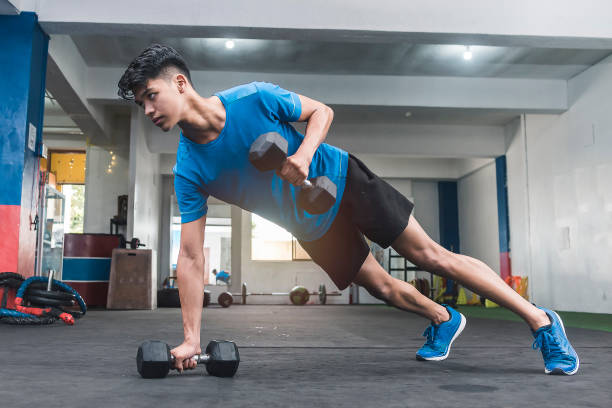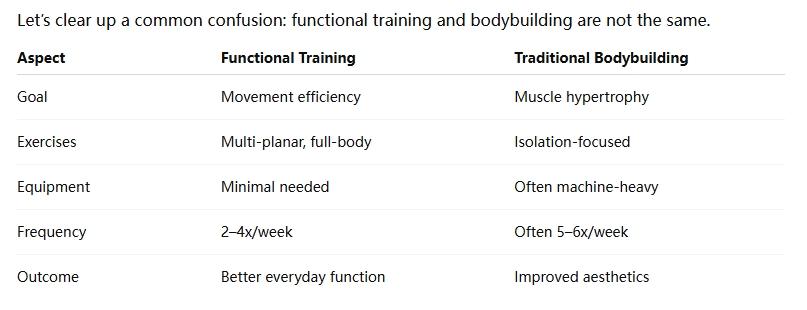Functional Training for Beginners: Why You Don’t Need to Lift Every Day
Think getting fit means hitting the gym six days a week, grinding through countless reps, and chasing bigger biceps? Think again. Functional training is reshaping the fitness landscape—and for good reason. It prioritizes movement, not muscle mass, helping you perform better in everyday life without the need for daily workouts. In this article, we’ll explore what functional training really is, why it's more effective (and practical) than traditional bodybuilding for most people, and how you can get started even as a complete beginner.
What Is Functional Training?
Definition and Core Concept
Functional training focuses on exercises that simulate real-world activities. Instead of isolating one muscle at a time, functional workouts train multiple muscle groups to work together—just like they do in real life.
You’ll move in multiple planes, activate your core, challenge your balance, and improve your coordination. These are workouts with purpose: lifting your toddler, carrying groceries, climbing stairs, or reacting quickly when you slip.
Goals of Functional Training
The primary aim of functional training is to make you better at life—not just the gym. Think of it as upgrading your body’s software. You'll:
- Move more efficiently and safely
- Strengthen your core for better posture and stability
- Improve your ability to push, pull, squat, hinge, rotate, and lunge
Why Functional Training Matters More Than You Think
Balance and Coordination Are Often Overlooked
How often do we train our ability to stay upright, shift weight, or react to a sudden loss of balance? Not often enough. Functional training builds these skills directly, reducing the risk of falls, sprains, and everyday injuries.
Core Strength = Real-Life Power
A strong core isn’t just about six-pack abs. It’s the foundation of nearly every movement—walking, lifting, twisting, even sitting with proper posture. Functional training engages deep stabilizing muscles, building real strength from the inside out.
Joint Health and Mobility
Unlike repetitive isolation movements that stress joints in the same way, functional exercises use full ranges of motion and keep your joints supple. This promotes longevity and reduces stiffness, especially for people who sit a lot or feel tight all the time.
Functional Training vs Traditional Bodybuilding
Let’s clear up a common confusion: functional training and bodybuilding are not the same.
Why You Don’t Need to Train Every Day
Here’s a little-known truth: working out less can actually be more effective—if the training is intentional. Functional training focuses on movement quality, nervous system activation, and full-body integration.
Three well-structured sessions per week can give you more results than six days of muscle-isolating workouts. Recovery and nervous system readiness are built in, allowing your body to adapt, not just survive.
Beginner-Friendly Functional Training Plan
Key Principles for Newcomers
If you're just starting, keep it simple:
- Use your bodyweight or light resistance
- Prioritize movement patterns, not muscle fatigue
- Progress gradually by adding complexity or resistance
Sample Weekly Split
Here’s a simple yet effective 3-day plan:
Full Routine Example
- Warm-Up (5–10 min): Arm circles Glute bridges Dead bugs Bodyweight squats
- Main Circuit (3 Rounds): Push-up to Downward Dog x10 Walking Lunges x12 per leg Resistance Band Rows x12 Bear Crawl x20 steps
- Finisher: Plank Hold (30–60 seconds)
- Cool-down: Hip flexor stretch Spinal twists Deep breathing
Final Thoughts: Smarter, Not Harder
You don’t need to “go hard” in the gym every day to get stronger, move better, and feel healthier. Functional training gives you results that extend beyond the mirror—helping you move with confidence, stay injury-free, and live an active life.
It’s not about training harder. It’s about training smarter.


